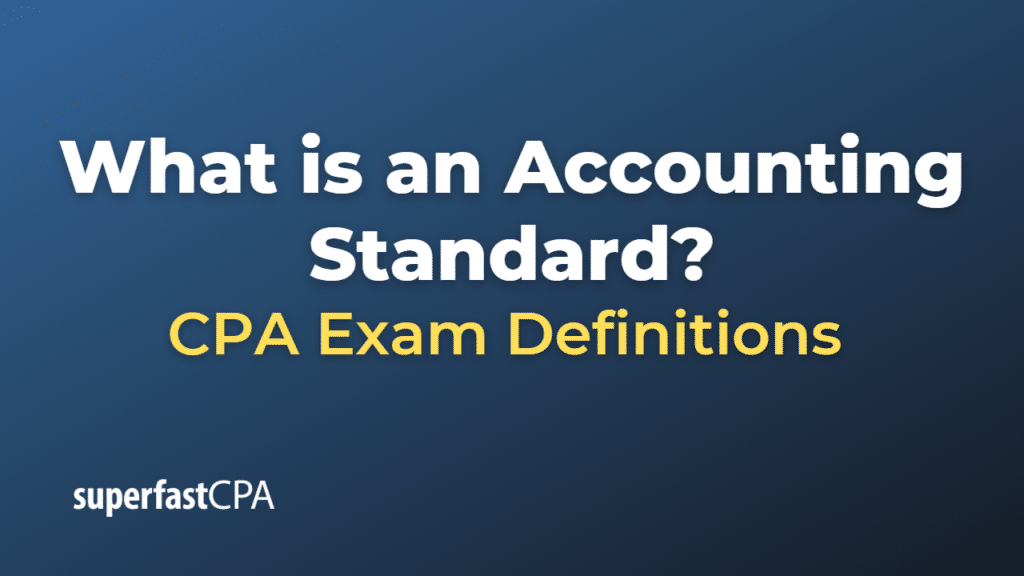Accounting Standard
An accounting standard is a set of rules, guidelines, and principles that govern the preparation and presentation of financial statements. Accounting standards are developed by standard-setting bodies and aim to ensure consistency, comparability, and transparency in financial reporting across different organizations and industries. They provide a common framework for the recognition, measurement, presentation, and disclosure of financial information, enabling users of financial statements to make informed decisions and comparisons.
There are two primary sets of accounting standards used worldwide:
- Generally Accepted Accounting Principles (GAAP): GAAP is the accounting framework followed by companies in the United States. It is developed and maintained by the Financial Accounting Standards Board (FASB). U.S. GAAP is a set of principles, standards, and interpretations that guide the preparation of financial statements for publicly traded and privately held companies, as well as non-profit organizations. It covers various aspects of financial reporting, including revenue recognition, balance sheet classification, and the treatment of financial instruments.
- International Financial Reporting Standards (IFRS): IFRS is a set of accounting standards developed by the International Accounting Standards Board (IASB) and followed by companies in more than 140 countries. IFRS aims to establish a single set of high-quality, globally accepted accounting standards that enable comparability and transparency in financial reporting across international borders. Like GAAP, IFRS covers a wide range of financial reporting topics, including the recognition and measurement of assets, liabilities, equity, revenues, and expenses.
Accounting standards are continually evolving to reflect changes in the business environment, financial markets, and the needs of financial statement users. Companies are required to comply with the accounting standards applicable in their jurisdiction and ensure that their financial statements are prepared in accordance with the established principles and rules. Compliance with accounting standards is crucial for maintaining the trust and confidence of investors, creditors, regulators, and other stakeholders in the financial reporting process.
Example of an Accounting Standard
Let’s take a look at an example of a specific accounting standard, IFRS 15 – “Revenue from Contracts with Customers.” This standard was jointly issued by the International Accounting Standards Board (IASB) and the Financial Accounting Standards Board (FASB) in May 2014 and applies to annual reporting periods beginning on or after January 1, 2018. The corresponding standard under U.S. GAAP is ASC 606.
IFRS 15 provides a comprehensive framework for recognizing revenue from contracts with customers, replacing several previous revenue recognition standards and interpretations. It is applicable to all industries and companies that enter into contracts to provide goods or services to their customers.
The core principle of IFRS 15 is that a company should recognize revenue in a manner that reflects the transfer of promised goods or services to customers at an amount that the company expects to be entitled to in exchange for those goods or services. To achieve this core principle, the standard establishes a five-step model for revenue recognition:
- Identify the contract(s) with a customer: A contract is an agreement between parties that creates enforceable rights and obligations. The contract must be approved by both parties, and each party must be committed to fulfilling its performance obligations.
- Identify the performance obligations in the contract: A performance obligation is a promise to transfer a distinct good or service (or a bundle of goods or services) to the customer. The company must identify all the separate performance obligations within the contract.
- Determine the transaction price: The transaction price is the amount of consideration that a company expects to be entitled to in exchange for transferring the promised goods or services. The transaction price may include fixed or variable amounts, discounts, rebates, or other types of consideration.
- Allocate the transaction price to the performance obligations: The company must allocate the transaction price to each performance obligation based on the relative standalone selling prices of the goods or services underlying those obligations.
- Recognize revenue when (or as) the company satisfies a performance obligation: Revenue is recognized when the company transfers control of a good or service to the customer. This can happen at a point in time (e.g., for a product sale) or over time (e.g., for a service contract).
IFRS 15 aims to provide a consistent and comprehensive framework for revenue recognition across industries and jurisdictions, enhancing comparability and transparency in financial reporting. By following this standard, companies ensure that their revenue recognition practices align with the principles and rules established by the IASB, which helps build trust and confidence among financial statement users.












